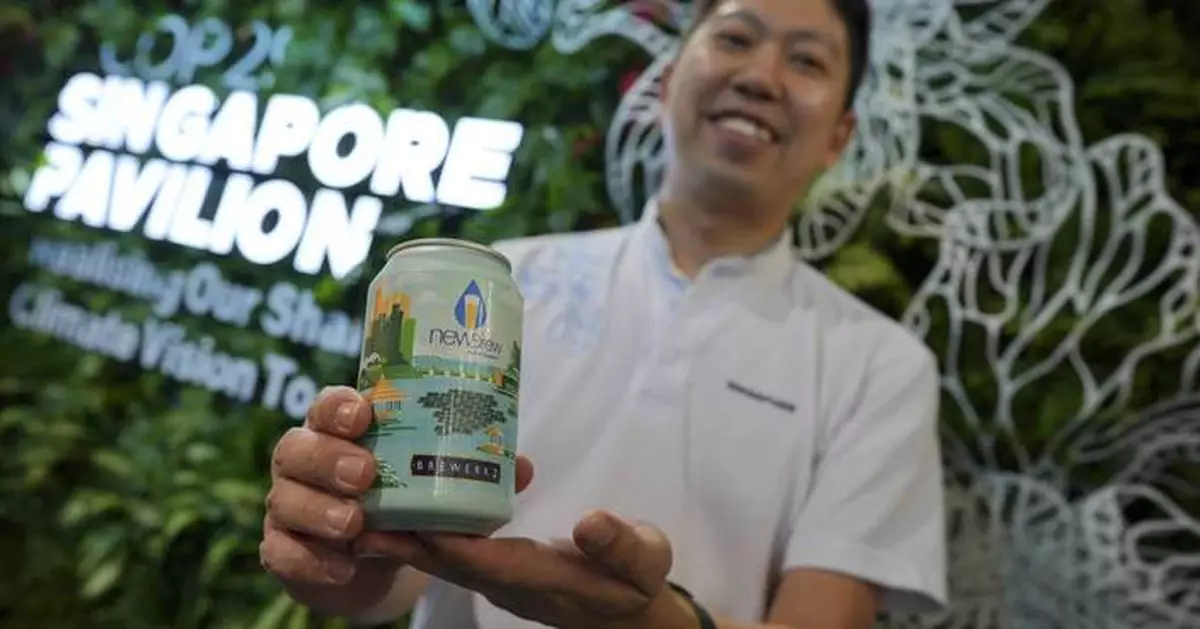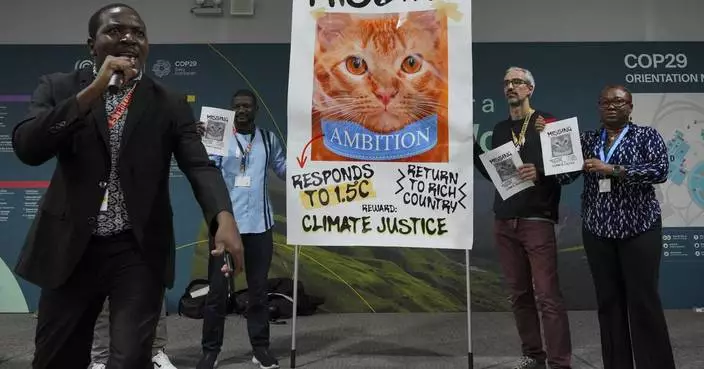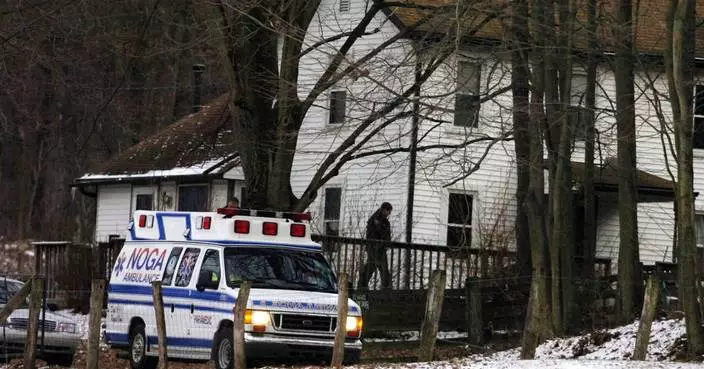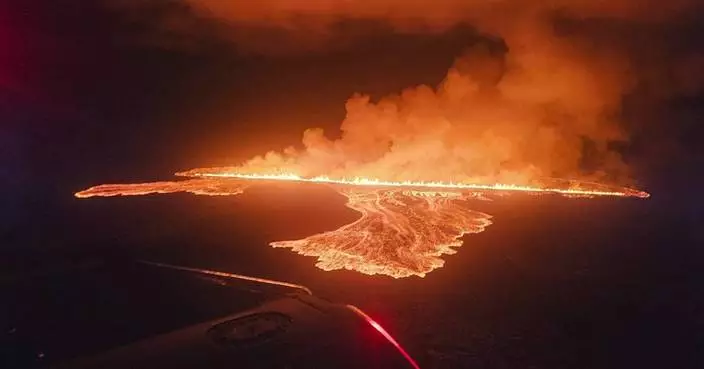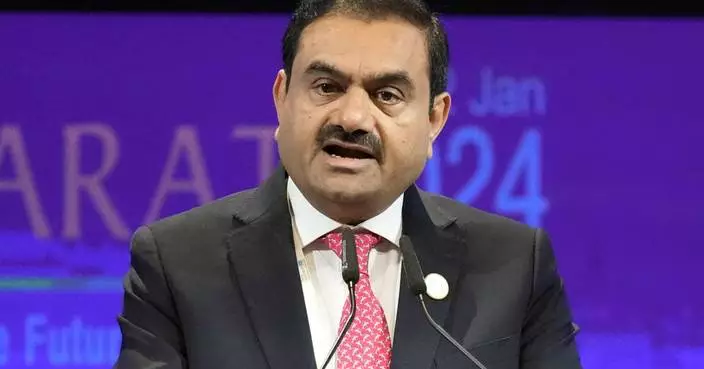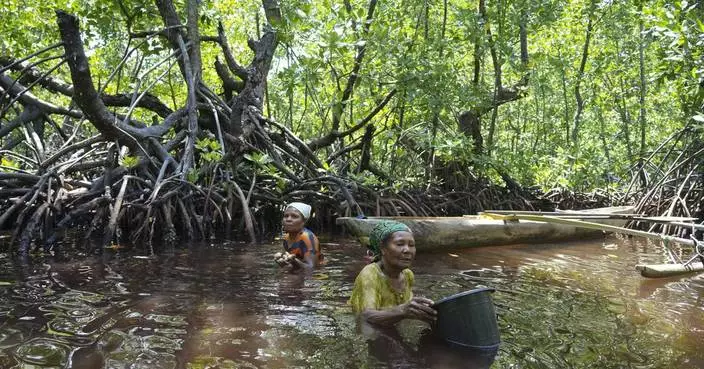BAKU, Azerbaijan (AP) — In the sprawling pavilion section of the United Nations climate talks, where countries, nonprofits and tech companies use big, flashy signs to get the attention of the thousands of people walking through, small aqua and purple beverage cans sit conspicuously on a counter at the Singapore display.
Those who approach learn that the cans are beer — a brand call NEWBrew — and free for anybody who asks. But there is something not everybody who cracks one open finds out right away, if at all: the beer is made with treated wastewater.
“I didn’t know. I was really surprised,” said Ignace Urchil Lokouako Mbouamboua, an international relations student from Congo, who recently sipped one while taking a break from the conference.
“I can even suggest that they make more and more of this kind of beer,” added Mbouamboua with a smile, sharing it was his third day in a row he stopped for a can.
NEWBrew is made in Singapore with NEWater, the name of treated wastewater that's part of a national campaign to conserve every drop in one of the world’s most water-starved places.
The drink, which some attendees jokingly call “sewage beer,” is one of many examples of climate- and environment-related innovations on display during this year's climate talks, COP29, taking place in Azerbaijan. Highlighting the use of treated wastewater underscores one of the world's most pressing problems as climate change accelerates: providing drinking water to a growing population.
For years, Singapore has been a leader in water management and innovations. The city-state island of 6 million people in Southeast Asia, one of the most densely populated countries, has no natural water sources. In addition to water imports from Malaysia, the other pillars of its national strategy are catchment, desalination and recycling. Authorities have said they need to ramp up all water sources, as demand is expected to double by 2065.
While drinking treated wastewater is a novelty for many at the climate conference, for Singaporeans it's nothing new. National campaigns — from water conservation pleas to showing the wastewater recycling process — go back decades. In 2002, then-Prime Minister Goh Chok Tong was famously photographed drinking a bottle of NEWater after a tennis match, done to normalize its use.
Ong Tze-Ch’in, chief executive of the Public Utilities Board, Singapore's national water agency, said NEWBrew was developed by a local brewery in 2018. The idea was to showcase treated wastewater at the country's biennial International Water Week. The beer was next produced in 2022, 2023, then again this year.
“It's part of the acceptance of the use of recycled water, which in general is a difficult topic," said Ong. “We did many things to drive it.”
And is he happy with how it turned out?
“I chose this flavor,” said Ong, adding that he was part of the group that worked with the brewery for this year's version, a “modern pilsner.”
“You know, beer is always very subjective,” he added with a laugh.
After attending a panel on water management at the Singapore pavilion, Peter Rummel, director of infrastructure policy advancement at Bentley Systems, which creates infrastructure engineering software, stepped up to the counter and got a beer. Rummel told onlookers he was in a good position to judge beer, as he hailed from Munich, Germany, home to the Oktoberfest beer festival.
“It’s fresh, light, cool. It has a nice flavor,” said Rummel, while looking at the can.
Wee-Tuck Tan, managing director of the local brewery, The Brewerkz Group, said they have made about 5,000 liters, or roughly 15,000 cans, for each edition of NewBrew. He said they use the same process as with other beers, and the cost is also similar, about 7 Singaporean dollars (around $5 U.S.) per can when bought in a supermarket.
Wee-Tuck said he believes the beer has shifted how some in Singapore view NEWater.
“They think it tastes funny," he said. “When put into a beer, it changes the mindset. Most people can't tell the difference.”
As problems with water scarcity grow, there is increasing embrace of the use of treated wastewater, said Saroj Kumar Jha, the World Bank Group's global water department director, who participated in the water management panel in the Singapore pavilion. Traveling to over 50 countries in the last two years, he said leaders have frequently told him it's important not to use the term “wastewater,” and instead call it “used water.”
After the panel concluded, Jha and the other panelists opened NEWBrews and toasted.
“It's really good,” said Jha. “It's the fourth time I've had it.”
“This year," he added with a laugh. “Not today.”
This story corrects the date of the photograph of then Prime Minister Goh Chok Tong drinking NEWater to 2002.
The Associated Press’ climate and environmental coverage receives financial support from multiple private foundations. AP is solely responsible for all content. Find AP’s standards for working with philanthropies, a list of supporters and funded coverage areas at AP.org.

Nick Chow, part of the COP29 Singapore Pavilion team, poses for a photo with NEWBrew, beer made with treated wastewater, during the COP29 U.N. Climate Summit, Friday, Nov. 15, 2024, in Baku, Azerbaijan. (AP Photo/Peter Dejong)
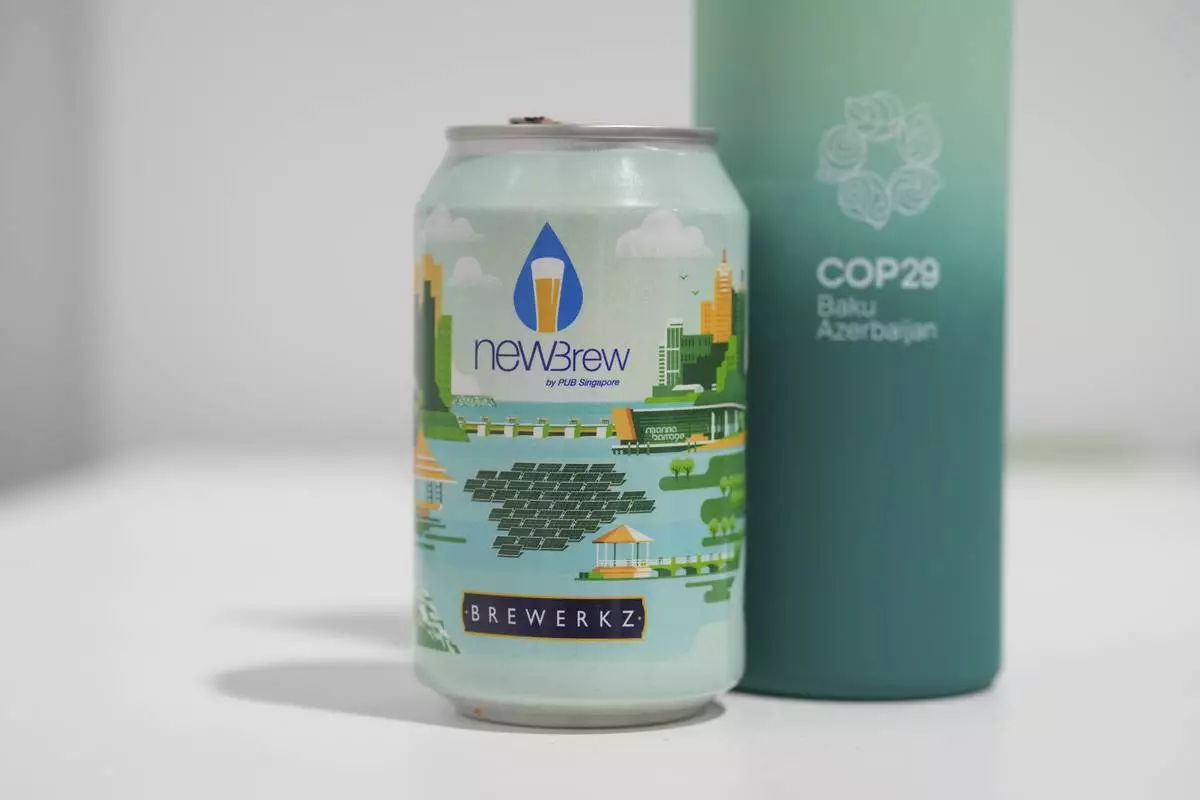
A NEWBrew beer, made with treated wastewater, is displayed at the COP29 U.N. Climate Summit, Friday, Nov. 15, 2024, in Baku, Azerbaijan. (AP Photo/Peter Dejong)

Nick Chow, part of the COP29 Singapore Pavilion team, poses for a photo with NEWBrew, beer made with treated wastewater, during the COP29 U.N. Climate Summit, Friday, Nov. 15, 2024, in Baku, Azerbaijan. (AP Photo/Peter Dejong)
VIENTIANE, Laos (AP) — An Australian teenager has died after drinking tainted alcohol in Vang Vieng, Laos, in what Australia's prime minister on Thursday called every parent's nightmare, and the U.S. State Department confirmed an American also died in the same party town, bringing the death toll to four.
Australian Prime Minister Anthony Albanese told Parliament that 19-year-old Bianca Jones had died after being evacuated from Laos for treatment in a Thai hospital. Her friend, also 19, remains hospitalized in Thailand.
“This is every parent’s very worst fear and a nightmare that no one should have to endure,” Albanese said. "We also take this moment to say that we’re thinking of Bianca’s friend Holly Bowles who is fighting for her life."
In a statement to the Melbourne Herald Sun newspaper, Jones' family asked for privacy in their grief.
“She was surrounded by love, and we are comforted by the knowledge that her incredible spirit touched so many lives during her time with us,” the family wrote.
“We want to express our deepest gratitude for the overwhelming support, love, and prayers we’ve received from across Australia.”
The State Department confirmed to The Associated Press in an emailed statement that an American tourist had also died but said it had no further comment out of respect to the family.
It said local authorities were investigating and that the U.S. was providing consular assistance.
“We offer our sincerest condolences to the family on their loss,” the State Department said.
Telephone numbers listed for Laos' Health Ministry did not work and police refused to comment.
Landlocked Laos is one of Southeast Asia's poorest nations and a popular tourist destination. Vang Vieng is particularly popular among backpackers seeking partying and adventure sports.
Details on the alcohol poisoning began trickling out about a week after the two Australian women fell ill on Nov. 13 following a night out drinking with a group in the remote town.
They are believed to have consumed drinks tainted with methanol, which is sometimes used as the alcohol in mixed drinks at disreputable bars and can cause severe poisoning or death.
Thai authorities confirmed that Jones had died by “brain swelling due to high levels of methanol found in her system.”
“Drink spiking and methanol poisoning are far too common in many parts of the world,” Australian Foreign Minister Penny Wong said after receiving news of Jones' death.
"At this time I would say to parents, to young people, please have a conversation about risks, please inform yourselves, please let’s work together to ensure this tragedy doesn’t happen again.”
New Zealand's Foreign Ministry said Thursday that one of its citizens was also unwell in Laos and could be a victim of methanol poisoning. Denmark's Foreign Ministry, when asked about the poisoning incident, said Wednesday that two of its citizens had died in Laos but would not provide further details.
“We have updated our travel advisory for Laos to note that there have been several cases of suspected methanol poisoning after consuming alcoholic drinks,” New Zealand's Foreign Ministry said.
“Travelers are advised to be cautious about consuming alcoholic beverages, particularly cocktails and drinks made with spirits that may have been adulterated with harmful substances.”
The U.S. did not immediately issue an updated travel advisory.
On Tuesday, Duong Duc Toan, manager of the Nana Backpacker Hostel where the two Australian women stayed in Vang Vieng, told the AP that staff were told by other guests that the two women were unwell after they failed to check out as planned on Nov. 13, and they arranged transport to a hospital for them.
The women were then transported to Thailand for emergency medical treatment and their parents flew in to be with them.
“All Australians offer them our deepest sympathy in this time of heartbreak,” Albanese said.
“Bianca’s trip should have been a joyous time and a source of fond memories in years to come,” he said. “It is beyond sad that this was not to be.”
Rising reported from Bangkok. Jutarat Skulpichetrat in Bangkok, Rod McGuirk in Melbourne, Australia, and Charlotte Graham-McLay in Wellington, New Zealand, contributed to this story.
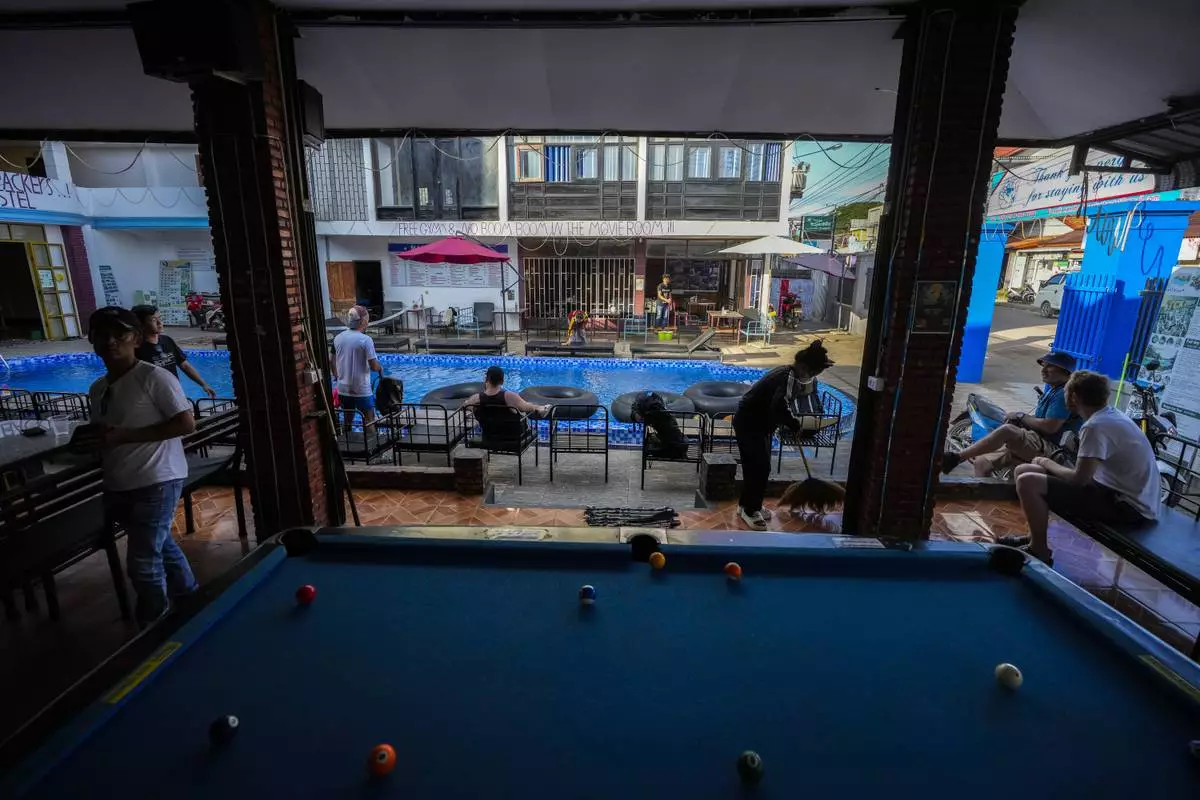
A woman cleans the floor at Nana Backpack hostel in Vang Vieng, Laos, Tuesday, Nov. 19, 2024. (AP Photo/Anupam Nath)

A woman carries a baby as she walks by the Nana Backpack hostel in Vang Vieng, Laos, Tuesday, Nov. 19, 2024. (AP Photo/Anupam Nath)
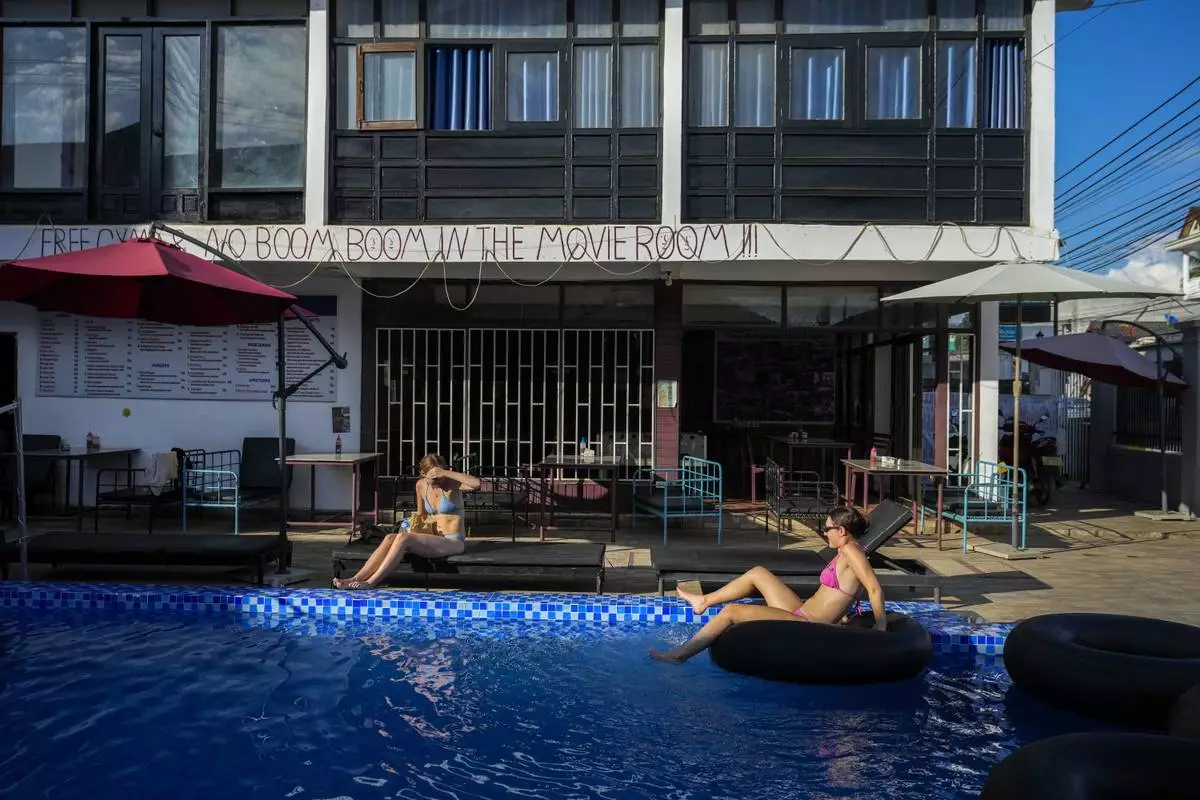
Foreign tourists relax at a swimming pool at Nana Backpack hostel in Vang Vieng, Laos, Tuesday, Nov. 19, 2024. (AP Photo/Anupam Nath)
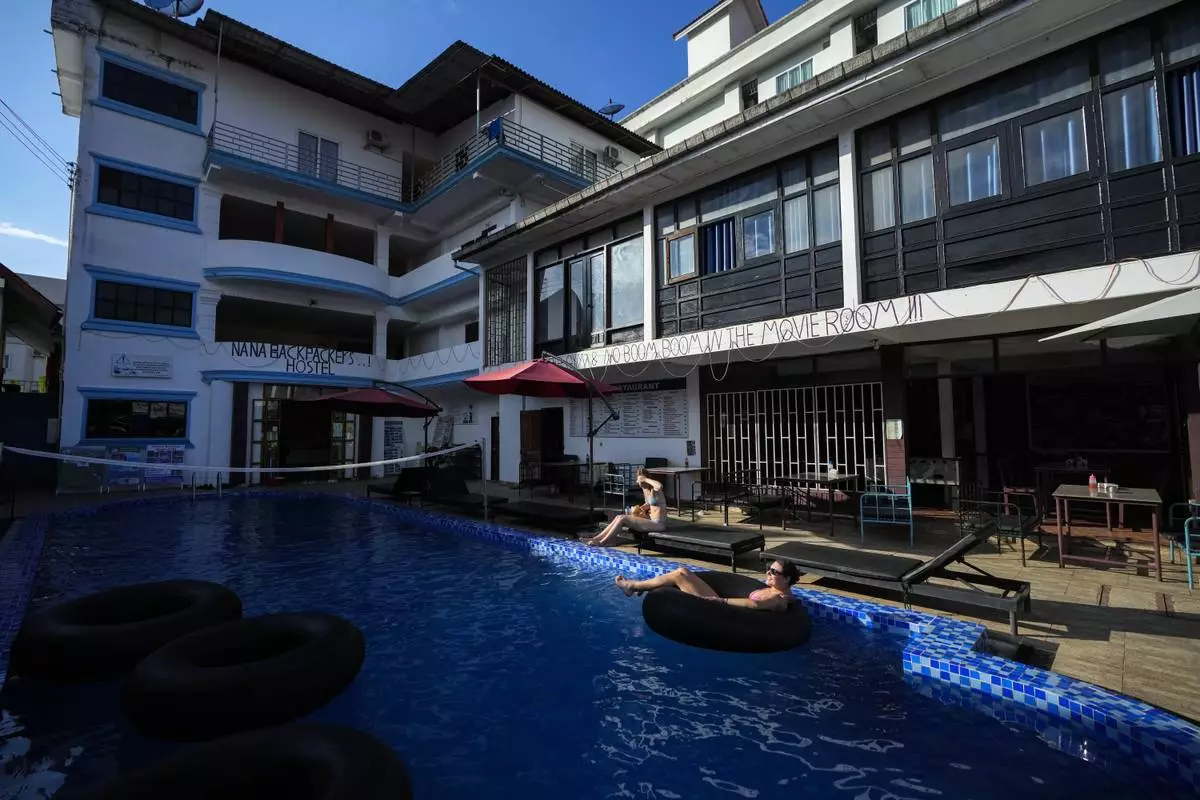
Foreign tourists relax at a swimming pool at Nana Backpack hostel in Vang Vieng, Laos, Tuesday, Nov. 19, 2024. (AP Photo/Anupam Nath)

A woman swipes the floor as foreign tourists check out of Nana Backpack hostel in Vang Vieng, Laos, Tuesday, Nov. 19, 2024. (AP Photo/Anupam Nath)

A foreign tourist buys coffee at Nana Backpack hostel bar in Vang Vieng, Laos, Tuesday, Nov. 19, 2024. (AP Photo/Anupam Nath)
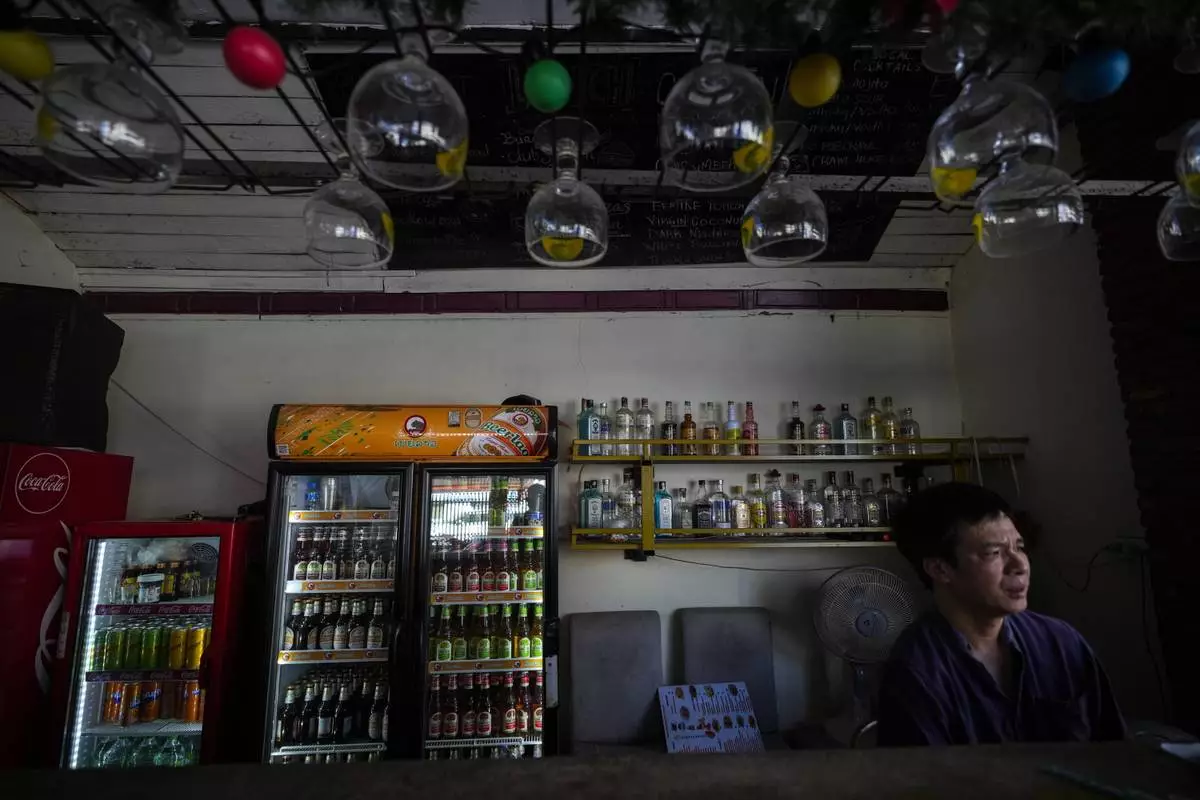
Duong Duc Toan, the manager of Nana Backpack hostel sits in the bar of the hostel in Vang Vieng, Laos, Tuesday, Nov. 19, 2024. (AP Photo/Anupam Nath)
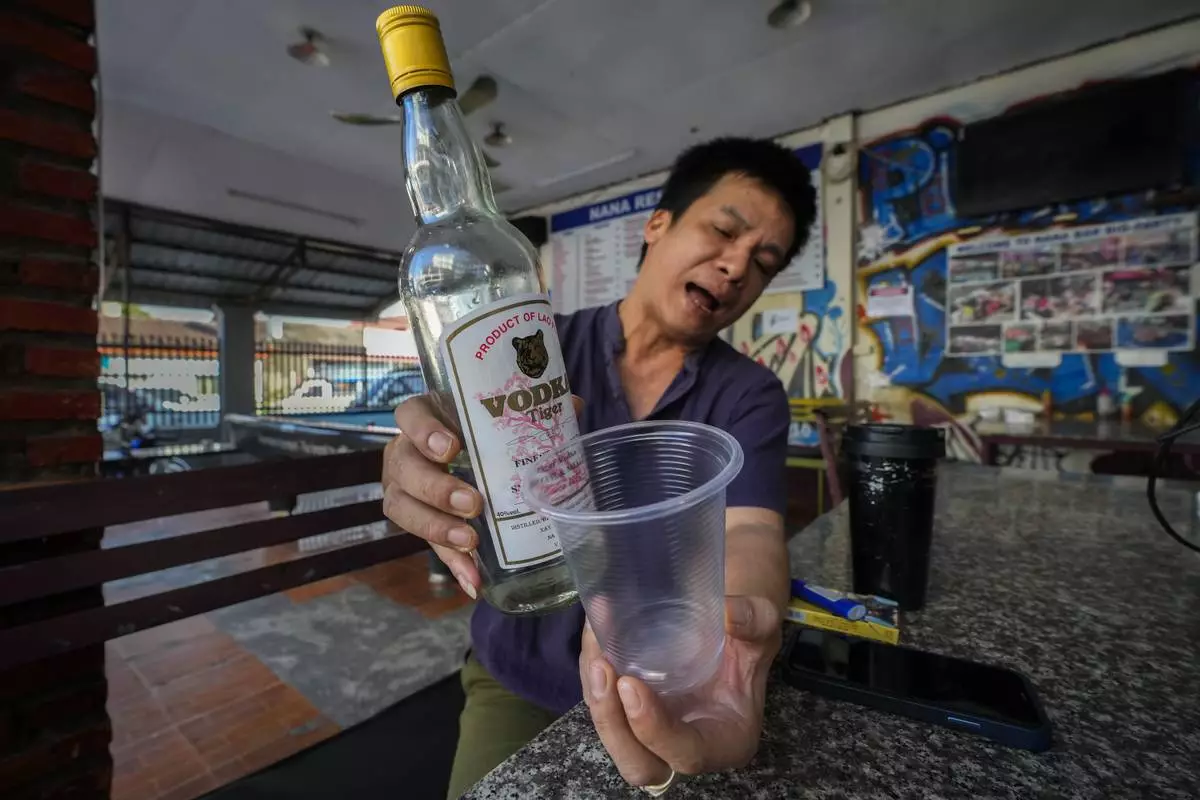
Duong Duc Toan, the manager of Nana Backpack hostel displays a bottle of vodka, in the bar of the hostel in Vang Vieng, Laos, Tuesday, Nov. 19, 2024. (AP Photo/Anupam Nath)
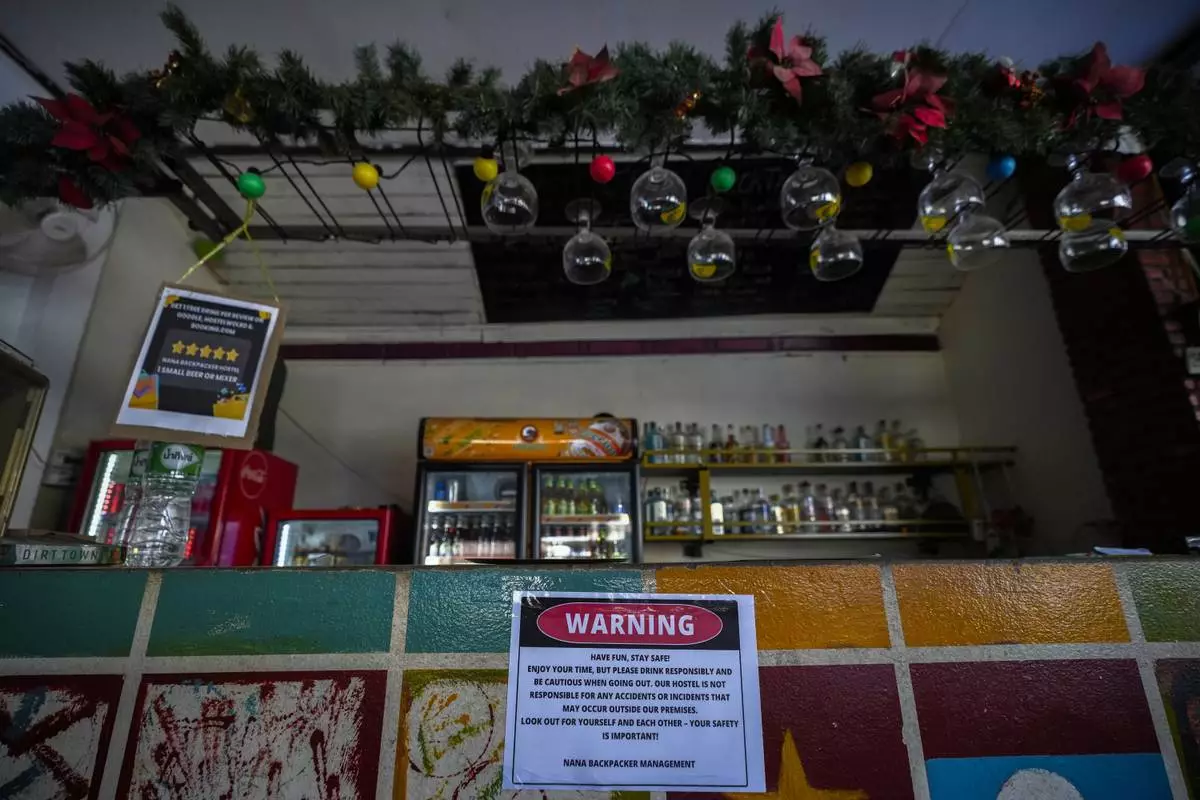
A notice displayed at the bar of Nana Backpack hostel in Vang Vieng, Laos, Tuesday, Nov. 19, 2024. (AP Photo/Anupam Nath)
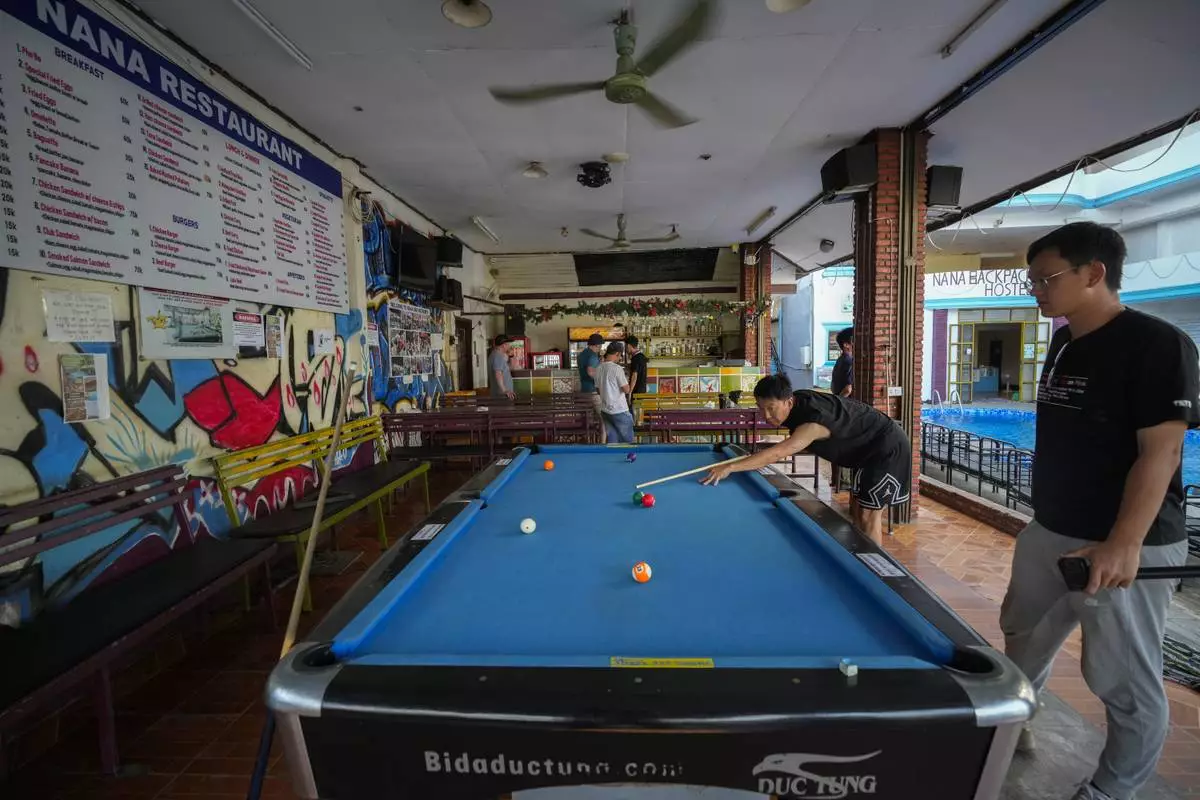
A man plays pool at Nana Backpack hostel in Vang Vieng, Laos, Tuesday, Nov. 19, 2024. (AP Photo/Anupam Nath)
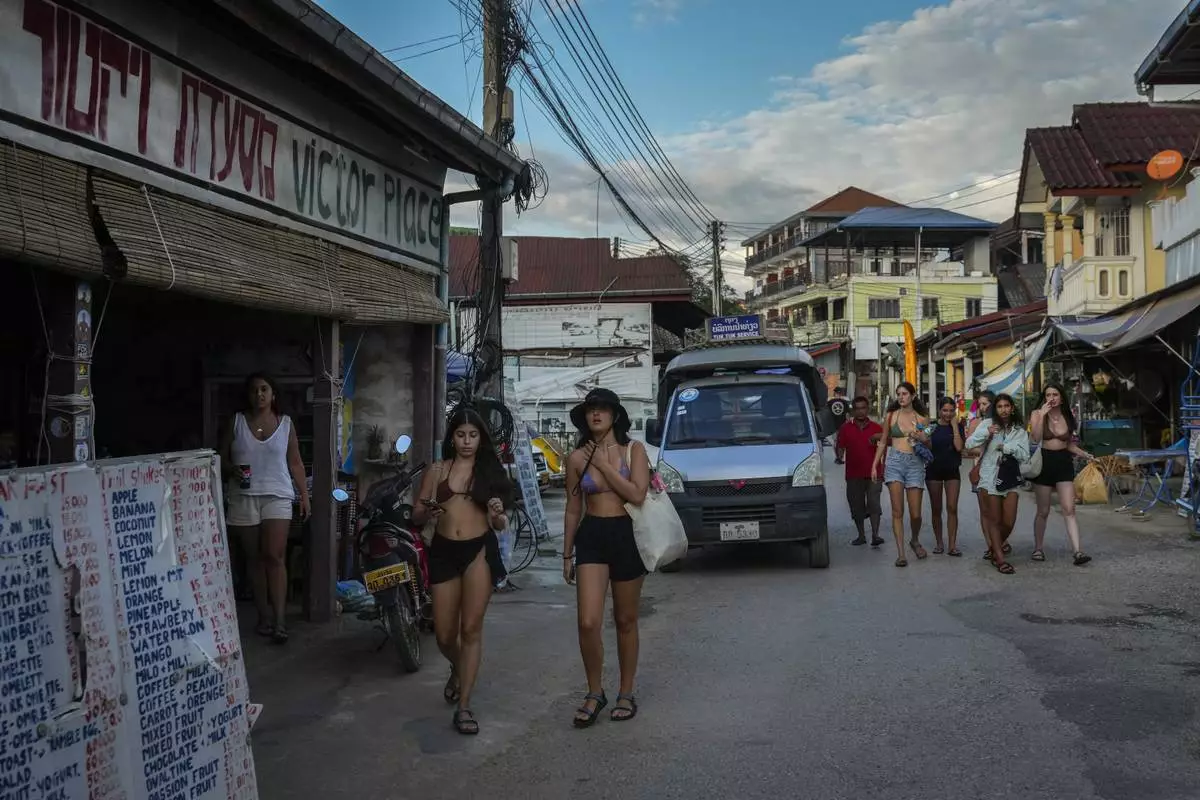
Foreign tourists walk in a street near bars in Vang Vieng, Laos, Tuesday, Nov. 19, 2024. (AP Photo/Anupam Nath)

Tourists eat food at Nana Backpack hostel in Vang Vieng, Laos, Tuesday, Nov. 19, 2024. (AP Photo/Anupam Nath)

Foreign tourists drink beer at a bar near a river in Vang Vieng, Laos, Tuesday, Nov. 19, 2024. (AP Photo/Anupam Nath)
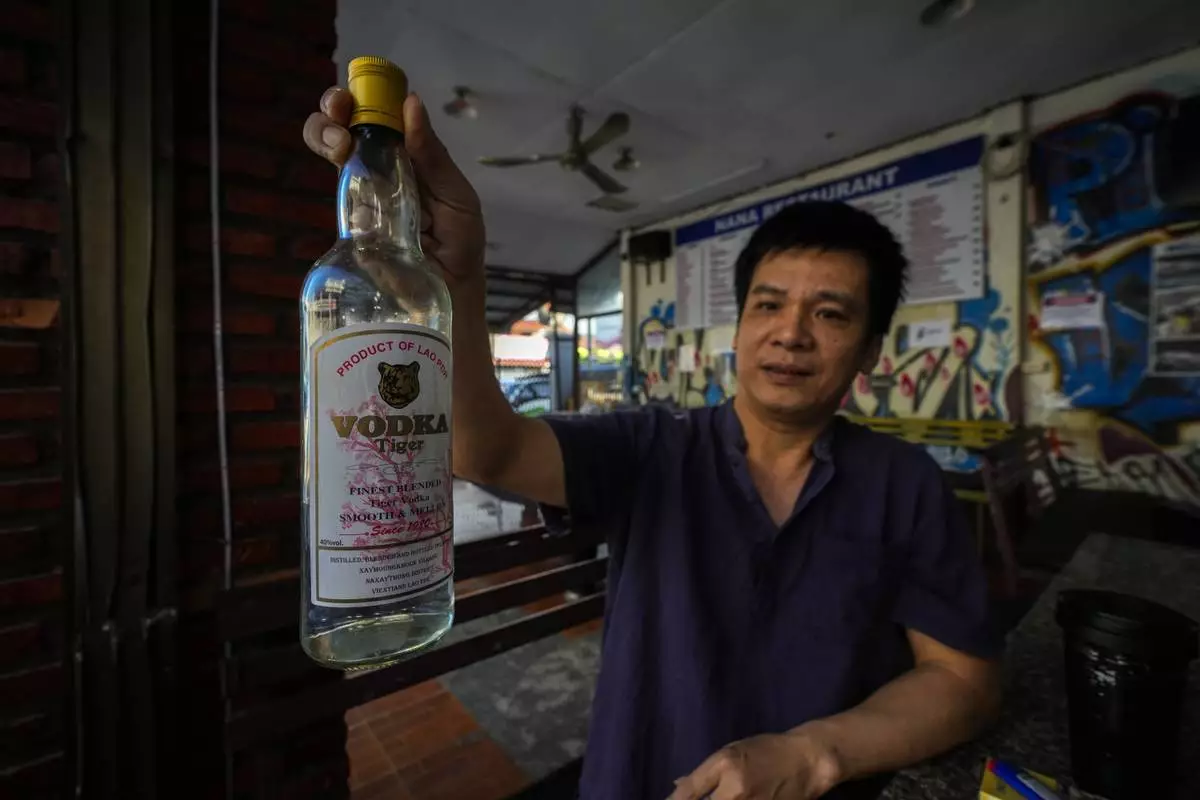
Duong Duc Toan, the manager of Nana Backpack hostel displays a bottle of vodka, in the bar of the hostel in Vang Vieng, Laos, Tuesday, Nov. 19, 2024. (AP Photo/Anupam Nath)
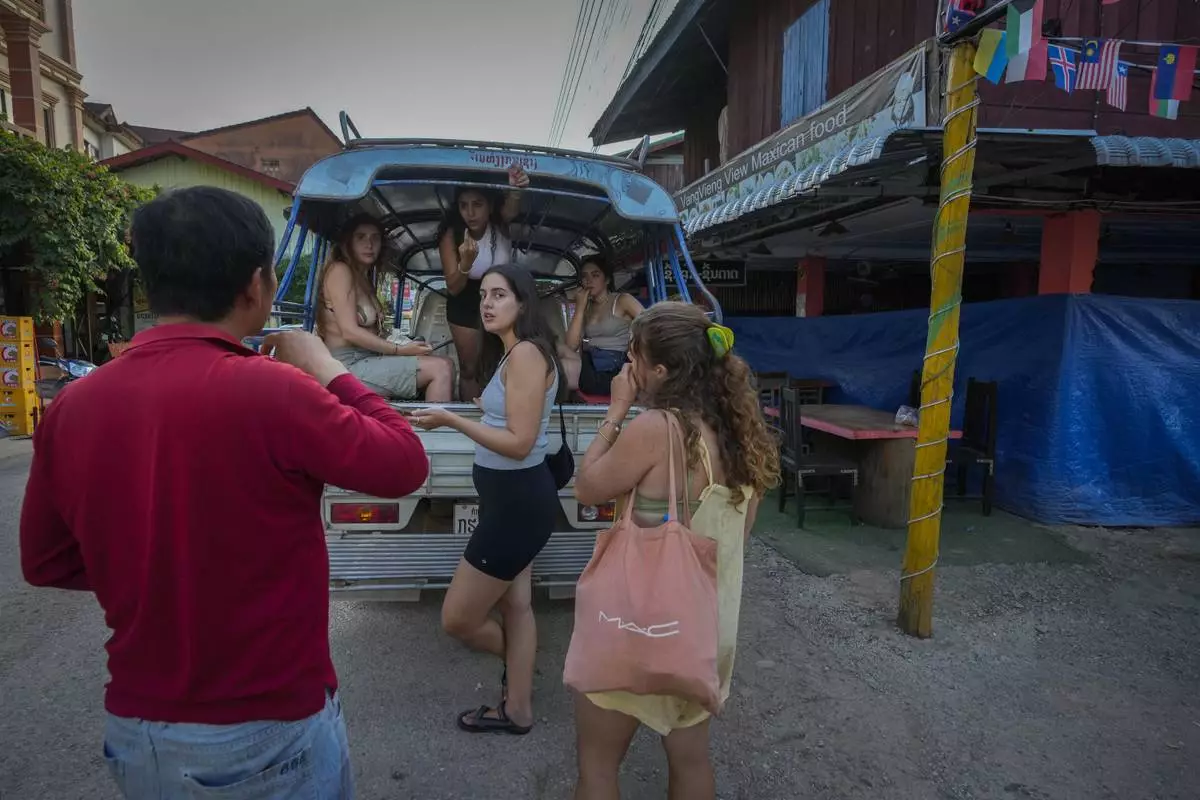
Tourists talk to a bar owner in Vang Vieng, Laos, Tuesday, Nov. 19, 2024. (AP Photo/Anupam Nath)

Foreign tourists have a drink at a night club at Nana Backpack hostel in Vang Vieng, Laos, Tuesday, Nov. 19, 2024. (AP Photo/Anupam Nath)





